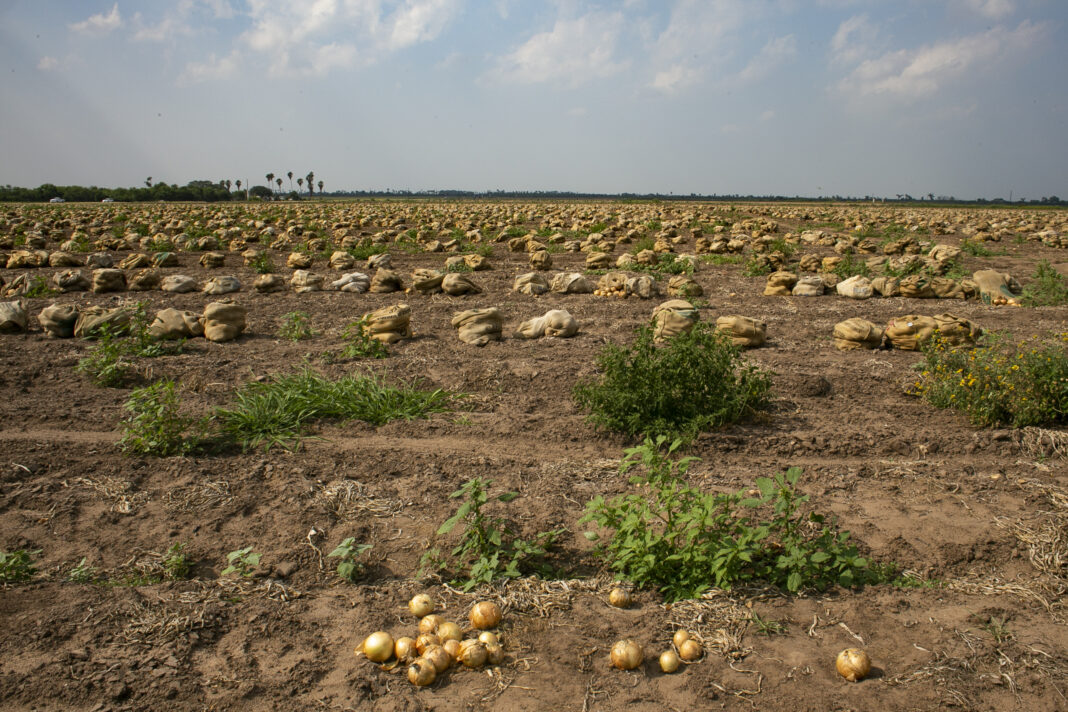Winter crops in the Valley are coming in, and the prospects for farmers growing onions, carrots, cabbages and leafy greens are looking relatively good when it comes to market prices.
Valley farmers have the luxury of a climate that allows two growing seasons, and in winter, those are the crops which take center stage. In all, Valley farmers grow from 40 to 50 different vegetables.
“We’re in the thick of things with harvest, no doubt, with carrots, leafy greens, cabbage and we’re about to get started on watermelon,” said Juan Anciso, a professor and vegetables expert with the Texas A&M AgriLife Extension Service in Weslaco.
Anciso said there have been some disruptions to harvesting due to rains this month, but those delays should diminish as the weather gets warmer and things dry out.
“I would say average to above-average yields,” he said. “It’s been a mild winter, not extremely hot and for the most part not extremely cold. You would think that the pest pressure would be extremely high but for some reason it has not been very high so the diseases have been low.”
Part of the lack of pest pressure on crops can be chalked up to last year’s deep freeze, Anciso said.
“Without a doubt, the spring crops, even the early fall crops, we did not have the white fly pressure that we’ve had in past years, and even other insects,” he said. “I think that freeze killed many of the weed hosts, and they were out of the picture, and so were those pests.
“It took a while for them to get back in gear,” Anciso added. “We have them, but they haven’t been totally out of control. They’ll be back; they didn’t go anywhere.”
Danielle Sekula, an AgriLife expert on pest management, said she’s anticipating the bounce-back among insect pests and worries about row crops such as cotton and grain sorghum, both of which will be planted in the coming weeks.
“I’m concerned about the white fly pressure this year, and this is in regard to row crops,” Sekula said. “From what I saw in the vegetables, like I was looking at some kale, and I could see there was some pretty good white fly pressure there. So I’m foreseeing some heavy white fly pressure in cotton later in our season once we do have cotton coming up, and this is along the river.”
“The other pest I’m worried about are thrips,” she added. “The early cotton stages may be hit up pretty bad by thrips so I’m concerned for heavy thrips pressure along the river and maybe Mid-Valley as well.”

The good news for spring planting of cotton and grain sorghum is moisture content of Valley soil is far higher than it was last year when drought conditions prevailed.
While all winter vegetables crops in the Valley are irrigated, much of the cotton and grain sorghum acreage are dryland fields, meaning irrigation is unavailable or unaffordable. Even so, even vegetables growers probably used less water than normal, Anciso said.
“Maybe with this moisture we haven’t irrigated as much, we haven’t drawn from the reservoir as much, but we were in a complete drought where we were bone-breaking dry at this time last year,” he said. “I would say we still need our irrigation water from our reservoirs and they’re really going down, they’ve been going down.”
For growers in the Rio Grande Valley, supply chain issues and inflation pressures are no different from the rest of us at the grocery store checkout.
Of particular concern is the added expense growers have to cover when it comes to fertilizer.
“At the start of planting in the fall for many of these cool-season vegetables, many growers were very concerned that they were paying double to triple from the year before,” Anciso said. “The year before the market on many of these vegetables was not very strong, so there was a lot of concern that they’re going to go more in the hole, more in the negative.”
Anciso said better prices have allayed some of the concern growers have over rising fixed costs.
“Had the market been weak, then it would have been a different scenario in the sense that their losses would be greater because they’re spending more,” he said.





